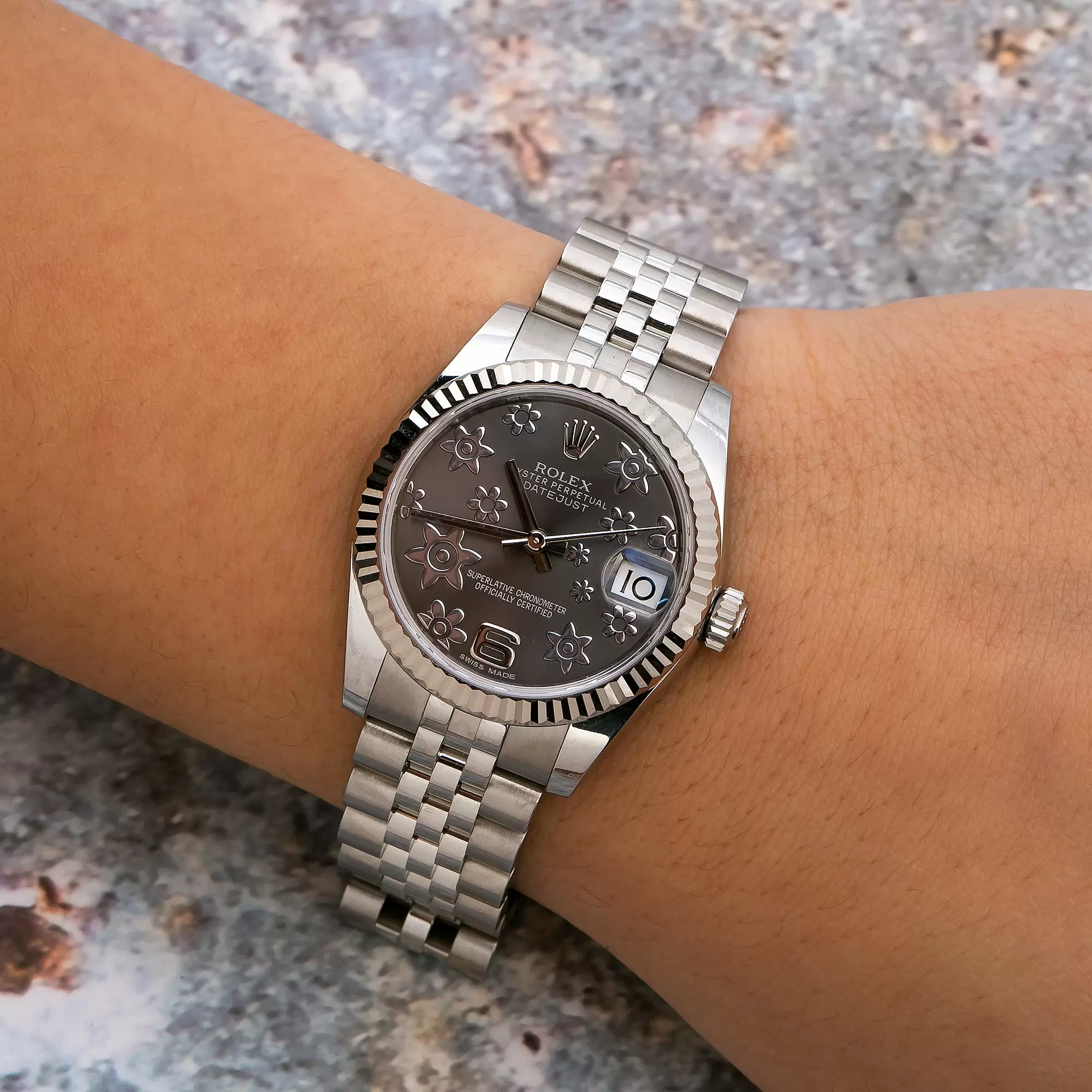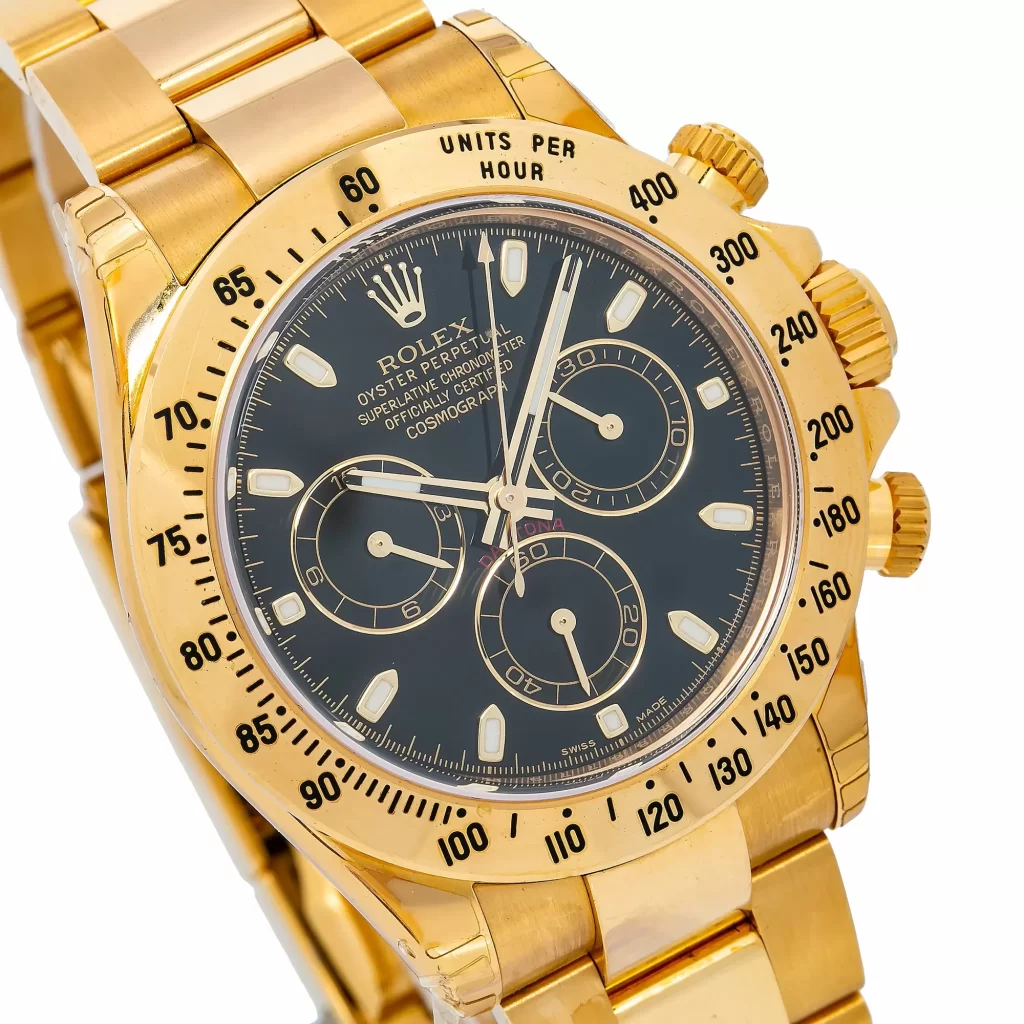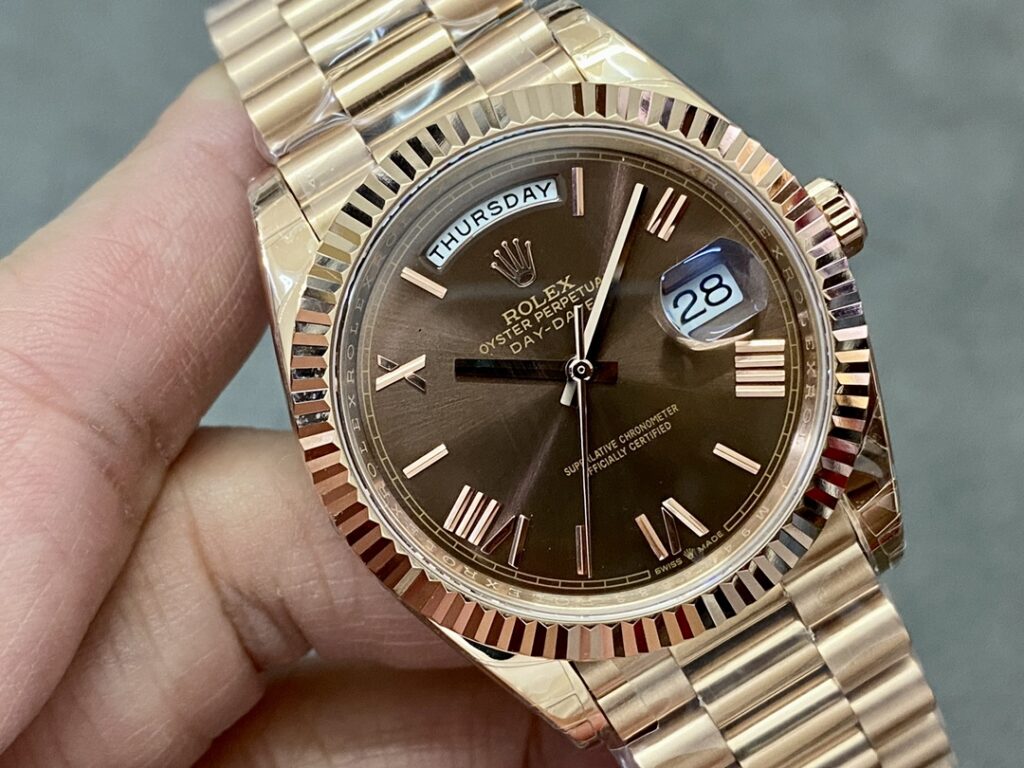Origins And History of Grand Seiko Watches

From the meticulous heartbeat of artisans to the rhythmic ticking of precision mechanics, Grand Seiko has evolved into a symphony of excellence within the world of watchmaking. Founded in a country celebrated for balancing tradition with futuristic innovation, the Grand Seiko replica watch collection embodies this quintessential Japanese essence, offering a seamless fusion of age-old craftsmanship and groundbreaking technology.

For those unfamiliar, Grand Seiko transcends being just another name in the vast realm of horology. It represents a statement – an emblematic pursuit of perfection. Each watch bearing the Grand Seiko logo stands as a testament to decades of dedication, history, and passion poured into its creation. While renowned today for its impeccable designs and unparalleled precision, the journey from local gem to global icon remains an inspirational saga.
Whether you’re a discerning watch enthusiast distinguishing the subtlest horological nuances, a passionate collector seeking the next crown jewel for your collection, or simply intrigued by tales of craftsmanship and legacy, this chronicle of Grand Seiko promises a perfect journey through decades of horological marvel.
Origins and Foundation
Every legendary story begins with humble origins, and Grand Seiko’s journey is no exception. In the vibrant district of Ginza, Tokyo, a visionary entrepreneur named Kintarō Hattori pursued a dream. In 1881, amid the fusion of tradition and transformation defining Meiji-era Japan, Hattori founded Seiko – a brand destined to reshape the fabric of watchmaking.
While Seiko’s early days were marked by modest creations and local acclaim, Hattori envisioned a global brand synonymous with precision, durability, and craftsmanship. Seiko’s watches gained traction, building a reputation for reliability in a world increasingly obsessed with punctuality.
“Grand Seiko is more than a watch; it embodies precision, craftsmanship, and the relentless pursuit of horological perfection. Each piece reflects a legacy of Japanese artisanship, blending tradition and innovation in a way few brands can match.” – Paul Altieri, Founder and CEO of replica Watches.
By the late 1950s, Seiko transcended domestic recognition to make waves internationally, adorning wrists from Tokyo to Toronto. Yet, as the brand expanded, a new vision emerged – to create a series of watches not only epitomizing Japanese craftsmanship but also setting global benchmarks. This ambition culminated in 1960 with the birth of Grand Seiko, marking not just the introduction of a new line, but a philosophy – a commitment to excellence that would define its legacy for decades to come.

Inception of Grand Seiko: 1960
As the world entered the 1960s, the stage was set for a horological revolution. Grand Seiko’s inception heralded more than the debut of a clone watch; it embodied a dream, a commitment, and above all, a relentless pursuit of perfection. Amidst an era where Swiss craftsmanship set the standard, Grand Seiko emerged with a distinct voice – a tribute to Japanese artisanship and precision.
Their debut model, featuring the iconic Caliber 3180, was not merely aesthetically pleasing; it symbolized a promise – a commitment to deliver accuracy, durability, and elegance in a single watch. As enthusiasts beheld this masterpiece, a realization dawned: Grand Seiko was not following trends; it was setting them.
Beyond its technical achievements, the 1960s Grand Seiko became a symbol – a symbol of Japan’s dedication to excellence, of Seiko’s legacy, and of a future where Eastern and Western watchmaking would stand shoulder to shoulder.
Expansion and Innovations: 1960s-1980s
The rise of Grand Seiko in the 1960s marked the onset of a transformative era in watchmaking. It wasn’t merely the birth of a new brand but the evolution of a philosophy – one that underscored perfection as an ever-evolving pursuit. This commitment became increasingly evident in the ensuing decades as Grand Seiko continually pushed the boundaries of innovation.
In the rich tapestry of horological advancements, the 1960s and 1970s stood as golden eras. Grand Seiko, in its relentless pursuit of excellence, unveiled masterpieces that seamlessly blended traditional craftsmanship with avant-garde technology. Watches like the iconic Grand Seiko Snowflake became revered not only for their aesthetic appeal but also for their groundbreaking mechanics. The introduction of the 44GS sculpted a design language that would become iconic, melding perfect elegance with modern sensibilities.
However, Grand Seiko’s achievements extended beyond aesthetics. The high-beat movements of the late 1960s showcased technical prowess rivaling, and at times surpassing, revered Swiss counterparts. By offering greater accuracy and a smoother second-hand sweep, Grand Seiko left an indelible mark, cementing its position at the forefront of precision timekeeping.
Approaching the 1980s, a new challenge loomed – the Quartz Crisis. While many established brands faced uncertainty, Grand Seiko, with its resilience and innovation, pivoted gracefully. Embracing and refining quartz technology, they showcased adaptability without compromising their core commitment to excellence. From capturing the elegance of a snowflake on a dial to revolutionizing movements, these decades epitomized Grand Seiko’s unwavering passion and continuous evolution, reaffirming that true artistry knows no bounds.
The Quartz Epoch and Grand Seiko’s Ingenious Response
The 1970s and 1980s marked a seismic shift in the watchmaking industry – the Quartz Crisis. This period witnessed the rise of affordable, highly accurate quartz watches, posing a formidable challenge to traditional mechanical craftsmanship. Many brands grappled with this new reality, where precision became commonplace rather than a luxury.
In response, Grand Seiko didn’t merely react; it responded with elegance and ingenuity. While others hesitated to adopt quartz technology, Grand Seiko viewed it as an opportunity – a new canvas to paint its legacy. Embracing quartz, Grand Seiko launched models that seamlessly integrated the brand’s pursuit of perfection with the efficiencies of quartz. The Grand Seiko Quartz Astron epitomized this marriage. Beyond achieving precision, these quartz models embodied craftsmanship, design elegance, and meticulous attention to detail – hallmarks of the Grand Seiko legacy.
This era showcased Grand Seiko’s adaptability and unwavering commitment to excellence. Their response to the Quartz Crisis wasn’t merely survival; it set new standards, demonstrating once again that for Grand Seiko, the pursuit of perfection is an ever-evolving journey.
The Spring Drive Movement: Redefining Timekeeping
Horology is punctuated by moments of genius – instances where innovation reshapes timekeeping paradigms. At the turn of the millennium, Grand Seiko introduced one such monumental innovation – the Spring Drive Movement.
Born from nearly three decades of research, the Spring Drive Movement defied categorization. Neither purely mechanical nor conventional quartz, it represented a masterful fusion. Grand Seiko’s engineers aimed to retain the soul and craftsmanship of mechanical watchmaking while achieving quartz-like precision. This ambition culminated in the Spring Drive.
Fundamentally, the Spring Drive Movement operates on a traditional mainspring, echoing the heartbeat of mechanical watches. Yet, it diverges in its regulation method. Instead of a conventional escapement, it employs a unique ‘Tri-synchro Regulator,’ which governs the mainspring’s unwinding, converting this energy into electricity to power a quartz oscillator. This innovative process delivers unparalleled accuracy while preserving the graceful sweep of a mechanical watch’s second hand.
One of its most captivating features is the glide motion second hand. Unlike the ticking or sweeping seen in other watches, the Spring Drive’s hand moves in a smooth, continuous glide across the dial, symbolizing the uninterrupted flow of time.
More than a technological feat, the Spring Drive Movement embodied a philosophical statement. It encapsulated Grand Seiko’s ethos of harmonizing tradition with innovation, affirming that true perfection lies in seamlessly merging the past with the future. In doing so, Grand Seiko redefined the boundaries of horological excellence.
A Modern-Day Renaissance: 2000s Onwards
The 21st century ushered in a new era of watchmaking – an era defined by the seamless integration of tradition and modernity. Grand Seiko, with its legacy of pioneering innovations and unwavering commitment to excellence, stood poised to lead this renaissance.
The introduction of the Spring Drive Movement in the early 2000s marked not the culmination but the commencement of Grand Seiko’s modern odyssey. In an age dominated by digital technology and rapid innovations, Grand Seiko served as a beacon of perfect craftsmanship. It reminded the world that amid fleeting trends, true elegance and precision endure.
Models such as the Grand Seiko Elegance collection, with its serene, textured dials echoing the tranquility of snow-clad landscapes, swiftly became classics. Yet, beyond aesthetics, Grand Seiko showcased its precision prowess. The Grand Seiko GMT models, for example, not only exuded elegance but also catered to modern globetrotters with functional sophistication.
As the brand ventured further into the 21st century, it continued to push boundaries. The introduction of the 9SA5 Caliber in 2020 marked another pinnacle in Grand Seiko’s journey. Featuring the Dual Impulse Escapement, this movement further elevated accuracy, representing another stride in the brand’s relentless pursuit of perfection.
However, what distinguishes Grand Seiko in this modern era is its ability to evoke emotion and narrative through each watch. It transcends mere timekeeping, encapsulating moments, memories, and legacies. As we journey deeper into this century, Grand Seiko promises not only innovations but perfect tales resonating across generations.
Grand Seiko’s Philosophical Craftsmanship
In the expansive realm of horology, where time serves as both canvas and narrative, Grand Seiko’s approach to watchmaking resembles a profound philosophical journey. Each watch, movement, and meticulous detail is more than an engineering feat – it reflects a deeper ethos。
At the heart of Grand Seiko lies the concept of “The Nature of Time.” Inspired by the ephemeral beauty of Japan’s seasons – the fleeting cherry blossoms of spring, serene winter snowscapes, and the vibrant hues of autumn – the brand transforms transient natural beauty into perfect artistry. Watches like the ‘Snowflake’ or ‘Skyflake’ epitomize this ethos, with dial textures that narrate tales of nature’s grandeur.
Beyond aesthetics, Grand Seiko’s philosophical craftsmanship is evident in its pursuit of perfection. Inspired by the Japanese concept of “Takumi,” which venerates masterful artisanship and skill, every Grand Seiko watch embodies thousands of hours of dedication. This reverence for craftsmanship enables the brand to seamlessly integrate traditional techniques with avant-garde innovations.
Moreover, the brand’s philosophy extends to the experience of wearing a Grand Seiko. The Zaratsu polishing technique, for instance, ensures each replica watch reflects light harmoniously, evoking tranquility and Zen.
In a world where watches often serve merely as functional objects, Grand Seiko stands apart. For them, watchmaking isn’t just about measuring time but honoring it – celebrating its beauty and capturing its essence in a dance of philosophy and craftsmanship.
Cultural Imprints of Grand Seiko
The essence of Grand Seiko is intricately woven into Japan’s cultural fabric. To understand this watchmaking maestro is to embark on a journey through Japan’s rich tapestry of traditions, values, and artistry. Each watch isn’t just a precision instrument but a canvas adorned with cultural motifs.
Central to this narrative is Japan’s profound reverence for nature. In Japan, the changing seasons symbolize more than climatic shifts – they represent the cyclical flow of life and time. Grand Seiko doesn’t merely acknowledge this; it celebrates it. Models like the ‘Snowflake’ mirror the serenity of snow-covered landscapes, while others capture the tranquility of spring dawns or the vibrancy of autumn foliage.

However, Grand Seiko’s cultural imprints extend beyond nature to include ancient Japanese crafts and techniques. The “Zaratsu” polishing method, derived from traditional Japanese sword-making, exemplifies this. Every reflective surface and polished facet speaks of a time-honored technique passed down through generations.
Another cultural cornerstone is the Japanese principle of “Ikigai” – the pursuit of purpose and passion. Grand Seiko embodies this ethos, continually pushing boundaries, driven by a passionate commitment to watchmaking excellence.
Furthermore, within Grand Seiko, there’s a harmonious blend of humility and ambition – a reflection of the Japanese spirit. It’s a union where quiet determination meets an unwavering quest for perfection.
In essence, each Grand Seiko watch transcends being a mere watch; it’s a story – a cultural artifact bridging past and present, inviting wearers to experience a slice of Japan’s rich heritage.
A Glimpse Ahead: The Future of Grand Seiko
Grand Seiko, with its illustrious legacy and unwavering commitment to horological excellence, stands at an intriguing crossroads as it gazes into the future. As we contemplate the path ahead for this iconic brand, it’s evident that the journey is as significant as the destination.
Grand Seiko’s future appears anchored in a harmonious blend of innovation and tradition. Their philosophy, which artfully merges Japanese cultural essence with cutting-edge horological advancements, will likely serve as their guiding light. As the number of new and old collectors grows, we continue to see more buyers in Grand Seikio brand, Omega vs. Rolex.
Category: promotional